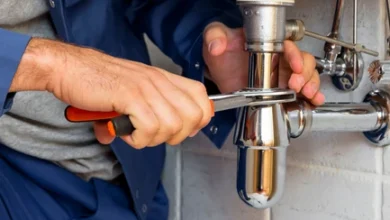How are You Getting Better and More Delicious Wines Box?
It used to be easy. Wine served from bottles with screw caps or boxes with mylar bags was “cheap” and unremarkable. Then, issues with corks became a common occurrence among people who buy wine, and even the best strawberry boxes near me winemakers started using corks made of synthetic material and screw caps to stay clear of the problems of corks made from real. The weight and price of glass bottles have become a problem since fuel prices increase and shipping gets more expensive. Nowadays, we are seeing increasingly more wines sold in bottles sealed by screw caps, modern plastic twist-off caps, or glass plugs. We sell wines in aluminum cylinders and boxes with varying dimensions and descriptions. Even traditionalists, Europeans, are doing it? Are all these wines inexpensive and unremarkable? Are we in the future?
I’m a certified Sommelier. I own a few interesting wine openers. They function well, and I’ve opened many bottles using them that they’re almost to extend my hand. I’ve been mulling over the thought that one of my corkscrews might disappear, the opening and presenting bottles of wine might reduce to the turn-on of an aluminum cap or the finger on a stopper made of rubber. However, I’m getting over the idea! I’ve opened numerous bottles of wine and was disappointed with the smell of old dry cardboard and the basement. While I’m not sure if every bottle of wine that I’ve had to drink is due to damaged cork, surely most of it is. I’m prepared to drink a wide range of wines, even the most prestigious vintages in bottles with screw caps, provided that the number of bottles with flaws is drastically diminished.
It’s incredible when you consider that the global wine industry is experiencing this rapid growth, even though three out of 10 bottles are flawed in some manner (estimates of the proportion of wine bottles that are flawed vary between 0.01 and up to 0.4 or greater) If 30 percent of Ford’s products were lemons that needed to return to the warehouse, how profitable could Ford be? What are other items from the world transported to be stored and shipped in containers Delivery Box which hasn’t changed much since its introduction over 350 years ago? Perhaps the cork bottle of wine is the most exemplary illustration of the old ways of repressing modernity. The way of thinking is evolving as it gets closer to the 21st Century dawns. Screw-capped wines are now recognized as having a similar quality to premium cork-closed wine as some of the top producers, who can be charging $100 or more for a bottle, are using them.
Then we have to think about the box wines. The big jugs were the norm for blends of generic wines. Do you remember “Mountain Riesling,” “Hearty Burgundy,” and “Chablis”? Fruity, pleasing wines did not have any distinct varietal flavor because they were various grape varieties. Burgundy and Chablis were named to identify them with European models even though they had little or no similarity to European wines.
In the 1980s, the American public was becoming more aware of the varietal wines made of some or all of the grape varieties that had names on labels. After that, when Europeans finally convinced us to cease using their labels as marketing tools for selling our wines at a low cost, the label was removed from the containers. “They’re inexpensive and mediocre but not wine in any way.” In the 1990s, when the technology for boxed wine advanced and more brands became involved, they kept the stigma of the generic jug wine brands.
For sure, there is a market for this wine. The backyard, boat, or camping trip is a great choice for the big event. The cost per ounce is less than half of the bottled wines, so they are a great choice for drinking at home. The box-in-box is practically indestructible and can be used in places (like camping) in which glass containers might be restricted. The sealed bag keeps the wine safe from hello sanrio mystery box oxygen, ensuring it remains fresh for weeks instead of just a few days. One rule in wine is that the quality and distinctiveness diminish as production grows. The box wines are mostly made in large quantities. The boxes can hold capacities up to 5 liters (roughly seven standard-sized bottles) which means you have to think they’re producing plenty of wine. However, the ideal drink is a refreshing and pleasant drink that you can enjoy without fuss, and a box of wine is perfect for many occasions.
Is the quality of wine increasing within the realm of boxed wines? I believe it is. Since quality is generally rising throughout Wine World, the quality and value of packaged wine also improve. Though you won’t find any of the French of Bordeaux placing their best cuvees in mylar bags any time shortly, highly good vinos are available from Australia and California, Argentina and South Africa, and France is now being offered inboxes. These “Black Box” wines of California are a perfect case. They’re juicy, fruity, and unassuming of real complex, but they also have an aromatic and textural appeal that makes these wines more appealing than dull.
Additionally, when tested over time, they exhibit a vintage variation. Bisset is a large wine producer located in France that offers “French Rabbit” wines in tetra-packs of 1 liter, and they’re very good. They make a great fuss about Skin care Box their commitment to the environment as they do with its quality wine. However, they are sustainable and vintage-dated with distinctive varietal characteristics that reveal their French roots. Are you able to say “zees wine is dee Terroir”? I’ve had the pleasure of tasting Cotes du Rhone red wines, Italian Pinot Grigios, and Argentine Malbecs in boxes that provide pleasure and wine-like honesty for less than the price of bottles of wine.
This leads to the following question “Are boxes the way of the future”? I believe they are. In a world where 50 percent or more of what you spend on wine is for advertising and packaging and the cost of shipping large glass bottles is a burden, the bag-in-box can provide some relief. The wine is fresh for a long period, the danger of cork taint has been eliminated, and there is no evidence that the current packaging hinders or detracts from the delicate flavors. The desire for high-quality wine has stretched some resources (like cork) to an extreme.



